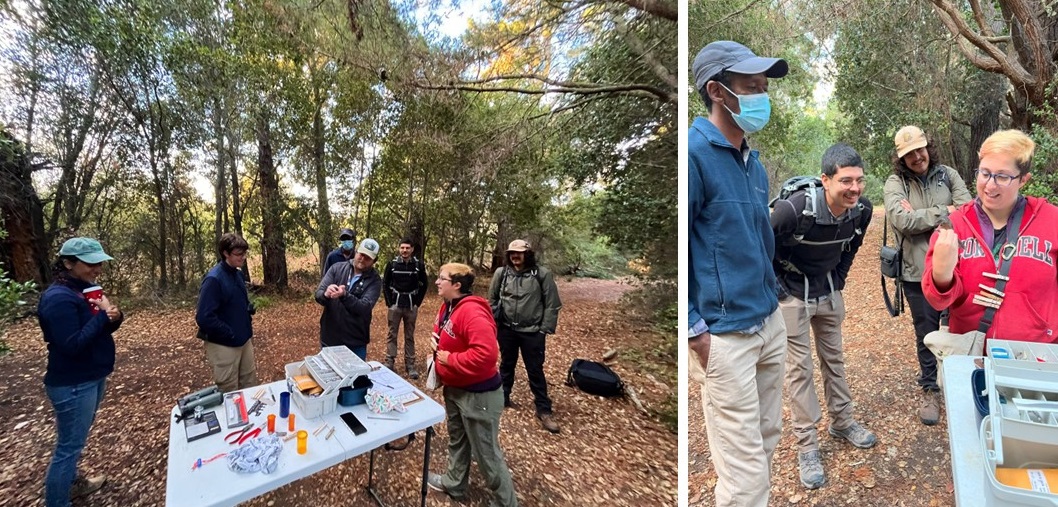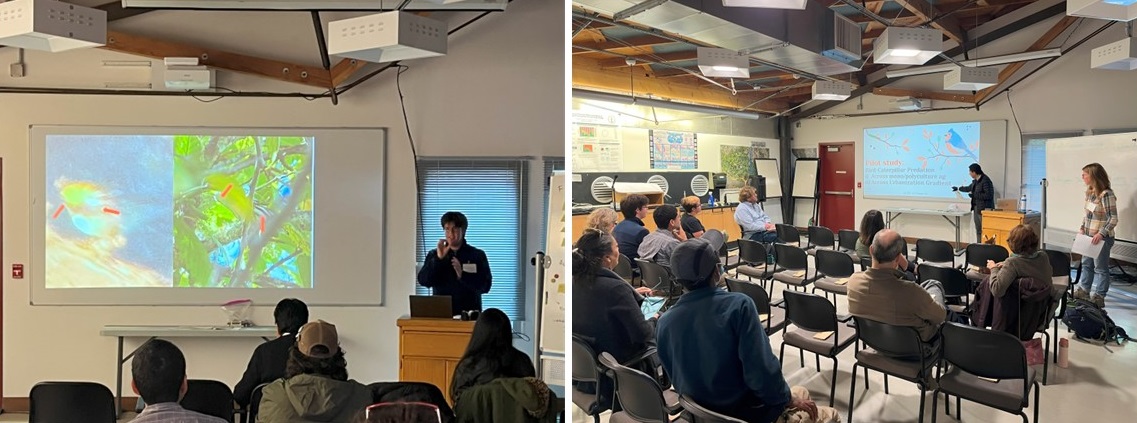SOAR takes off with its first All-Hands meeting!

SOAR Renewed
Following the successful completion of a 2022 National Science Foundation incubator grant, the San Francisco Bay Research Coordination Network for Student Opportunities in Avian Research (SOAR) officially launched in 2023 with the start of a five-year Research Coordination Network grant. Led by Professor Rodolfo Dirzo and Dr. Katie Glover, SOAR marked the end of its first year of programs, funding, and student support with an All-Hands SOAR meeting at Jasper Ridge Biological Preserve - 'Ootchamin 'Ooyakma (JRBP'O'O).
With the next five years of NSF support, the SOAR network will continue to introduce undergraduate students to field experiences and ornithology research, focusing on those from underserved communities. The partners include JRBP'O'O, West Valley College, San Jose State University, Santa Clara University, University of California at Santa Cruz, San Francisco Bay Bird Observatory, Mission College, California Academy, iNaturalist, and Cornell Lab of Ornithology. Situated within the Pacific Flyway, our region is an ideal setting to observe and study the dynamics of bird populations. This positions us to offer students the experiential and authentic research experiences that are foundational to STEM careers.
All-Hands Meeting
The first All-Hands Meeting for SOAR took place at the Sun Field Station on November 17, 2023. This was the first in-person gathering for all partners since the pandemic, since our incubator grant from NSF, and since receipt of our 5-year funding award. Everyone was excited to gather and share their Year 1 successes on the creative ways they have integrated field visits and skill-building into their courses. In addition to SOAR partners, guests included SOAR student interns from West Valley College, JRBP'O'O staff, guests from Stanford Conservation Program, and members of the Dirzo Lab.
Our day began with a bird banding demonstration for several early morning bird enthusiasts, by Dr. Katie LaBarbera of SFBBO. During morning sessions, co-PI Dr. Lyne Trulio of San José State University workshopped a pilot survey on students’ experience in SOAR courses, designed by external evaluator Melissa Armstrong. Marty Freeland, Stanford class of 2027, gave a lunchtime talk “Which Birds Get Lost? Demographic Trends Among Passerine Vagrants in California.” Participants shared their students’ accomplishments in courses and at the 2023 Ecological Society of America annual meeting in Portland, OR. SOAR has led directly to the development of new courses and content with our partners, including modules on molecular ornithology. Stanford is currently offering BIO 121 Ornithology for the Spring 2024 quarter.

LEFT: Dr. Katie LaBarbera, Science Director at the San Francisco Bay Bird Observatory and JRBP’O’O research partner, demonstrates bird banding at Jasper Ridge. JRBP’O’O staff, SOAR partners and interns, and Stanford students attended the early morning session. RIGHT: Katie LaBarbera (SFBBO) shows a bird band to Edwin Osujaki (Stanford Conservation Group) and West Valley College SOAR interns Donovan Belardes and Nick Verdi.
Trevor Hébert, JRBP'O'O Technology Specialist, led a discussion in the afternoon about the planned installation of a Motus wildlife tracking station on the preserve. Motus is a collaborative research network that uses automated radio telemetry to track wildlife, including migratory birds. Small radio transmitter tags are attached to birds, which are automatically detected as they fly near Motus stations along their migration routes. A unique identification number associated with the tag allows data to be collected about individual birds’ movements – which sometimes span continents – and can provide critical insights into migration patterns, population dynamics, and the effects of environmental changes.
While brainstorming goals and activities for the upcoming year, several partners commented on the opportunities that will arise from the new Motus station. Including Jasper Ridge in this network will present new educational opportunities for students to engage with real-world avian migration and census data. SOAR partners also discussed effective survey design so that we can assess the impact that our network activities have on students across all institutions. Reflecting upon Year 1, Biology co-Chair Leticia Gallardo at West Valley College had this to say: “SOAR has given me the platform, ideas, and network to bloom out the seeds of my ideas.”

LEFT: Marty Freeland, gives a lunchtime talk on his independent research on vagrant birds. RIGHT: Professor Rodolfo Dirzo, SOAR co-PI, discusses his research lab’s new study on birds as predators and regulators of caterpillars.
Next Steps
We look forward to building on the success of our first year, and continuing to teach experiential field-based courses for students in the network. Paid internships to support students are an integral part of SOAR. Nine students across our network have been supported so far, and we look forward to adding more to this inaugural cohort of interns. One of our Year 2 goals is to grow student participation in the network, and continue our outreach to underserved communities. Stanford will host a student-led BioBlitz for partners in the spring with a focus on birds. Partners plan to launch our student experience survey in their courses in Year 2, and start design of other assessment tools.
In all, we had a generative day of networking and brainstorming at JRBP'O'O. We heard testimonials from students on what SOAR support has done for them and impacted their professional development. With SOAR as part of their college experience, our students are taking flight to new achievements.
By Katie Glover, Jorge Ramos, and Trevor Hébert



